Inna Novalija
Enriching Artificial Intelligence Explanations with Knowledge Fragments
Apr 12, 2022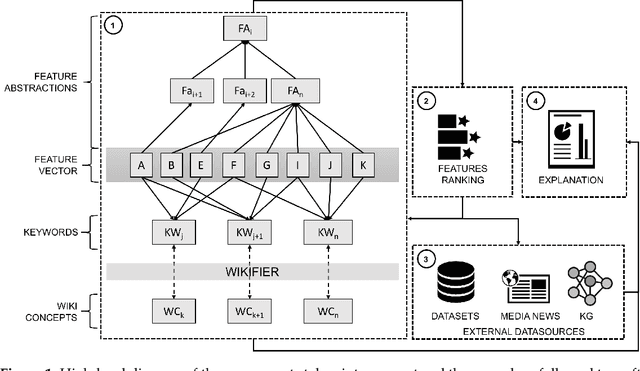
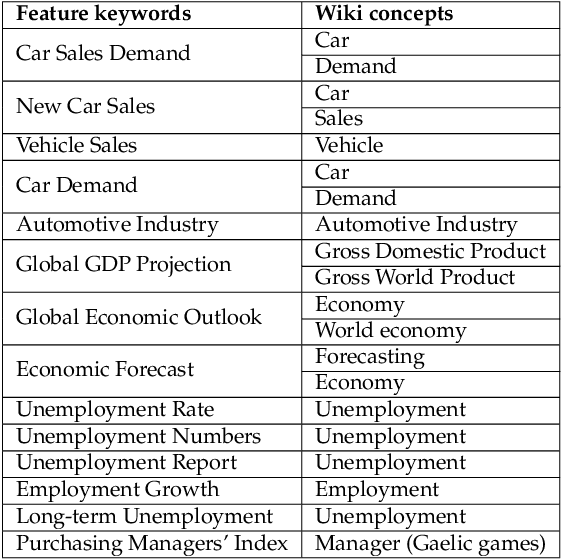
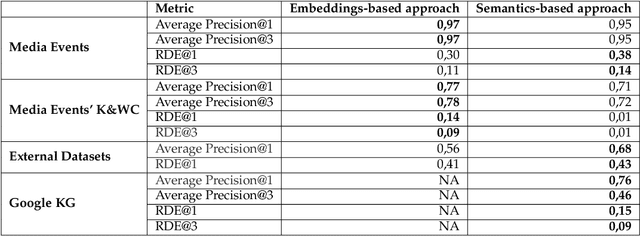
Abstract:Artificial Intelligence models are increasingly used in manufacturing to inform decision-making. Responsible decision-making requires accurate forecasts and an understanding of the models' behavior. Furthermore, the insights into models' rationale can be enriched with domain knowledge. This research builds explanations considering feature rankings for a particular forecast, enriching them with media news entries, datasets' metadata, and entries from the Google Knowledge Graph. We compare two approaches (embeddings-based and semantic-based) on a real-world use case regarding demand forecasting.
Human-Centric Artificial Intelligence Architecture for Industry 5.0 Applications
Mar 21, 2022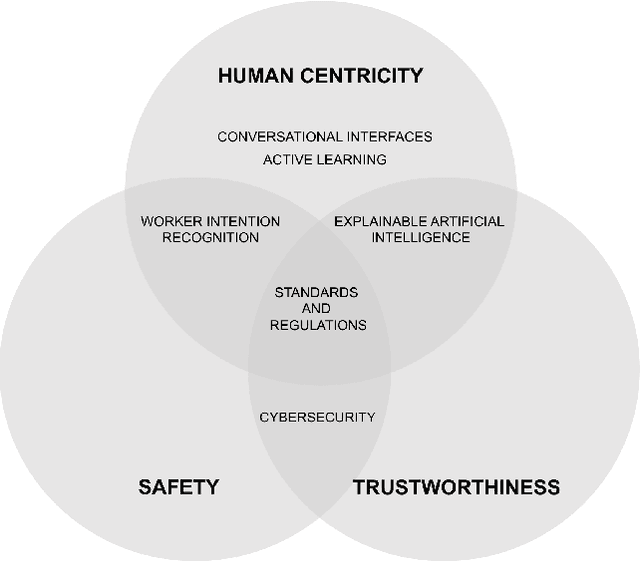
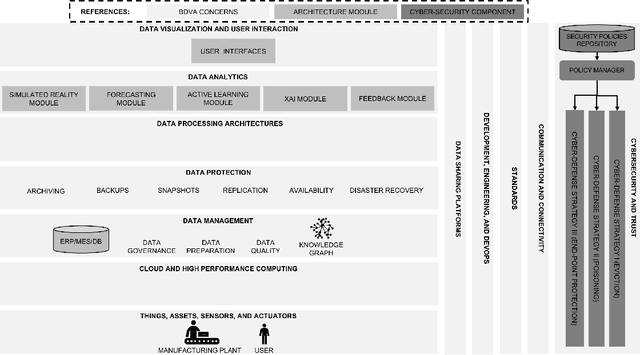
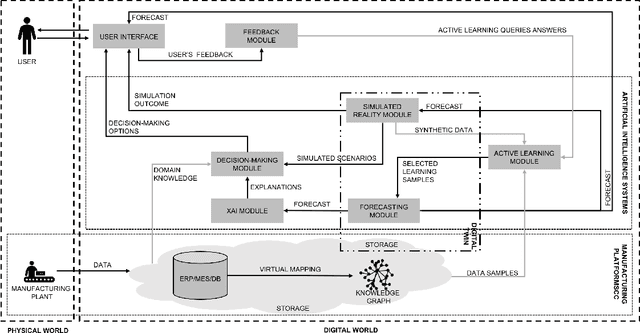

Abstract:Human-centricity is the core value behind the evolution of manufacturing towards Industry 5.0. Nevertheless, there is a lack of architecture that considers safety, trustworthiness, and human-centricity at its core. Therefore, we propose an architecture that integrates Artificial Intelligence (Active Learning, Forecasting, Explainable Artificial Intelligence), simulated reality, decision-making, and users' feedback, focusing on synergies between humans and machines. Furthermore, we align the proposed architecture with the Big Data Value Association Reference Architecture Model. Finally, we validate it on two use cases from real-world case studies.
Knowledge Modelling and Active Learning in Manufacturing
Jul 05, 2021Abstract:The increasing digitalization of the manufacturing domain requires adequate knowledge modeling to capture relevant information. Ontologies and Knowledge Graphs provide means to model and relate a wide range of concepts, problems, and configurations. Both can be used to generate new knowledge through deductive inference and identify missing knowledge. While digitalization increases the amount of data available, much data is not labeled and cannot be directly used to train supervised machine learning models. Active learning can be used to identify the most informative data instances for which to obtain users' feedback, reduce friction, and maximize knowledge acquisition. By combining semantic technologies and active learning, multiple use cases in the manufacturing domain can be addressed taking advantage of the available knowledge and data.
XAI-KG: knowledge graph to support XAI and decision-making in manufacturing
May 06, 2021Abstract:The increasing adoption of artificial intelligence requires accurate forecasts and means to understand the reasoning of artificial intelligence models behind such a forecast. Explainable Artificial Intelligence (XAI) aims to provide cues for why a model issued a certain prediction. Such cues are of utmost importance to decision-making since they provide insights on the features that influenced most certain forecasts and let the user decide if the forecast can be trusted. Though many techniques were developed to explain black-box models, little research was done on assessing the quality of those explanations and their influence on decision-making. We propose an ontology and knowledge graph to support collecting feedback regarding forecasts, forecast explanations, recommended decision-making options, and user actions. This way, we provide means to improve forecasting models, explanations, and recommendations of decision-making options. We tailor the knowledge graph for the domain of demand forecasting and validate it on real-world data.
STARdom: an architecture for trusted and secure human-centered manufacturing systems
Apr 02, 2021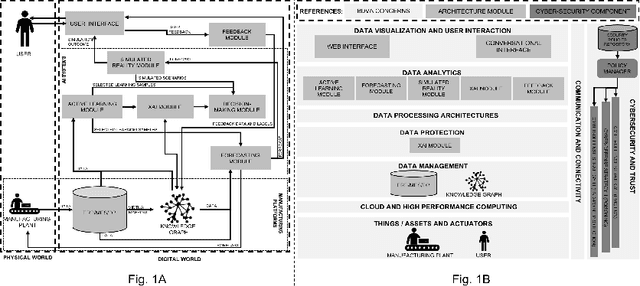
Abstract:There is a lack of a single architecture specification that addresses the needs of trusted and secure Artificial Intelligence systems with humans in the loop, such as human-centered manufacturing systems at the core of the evolution towards Industry 5.0. To realize this, we propose an architecture that integrates forecasts, Explainable Artificial Intelligence, supports collecting users' feedback, and uses Active Learning and Simulated Reality to enhance forecasts and provide decision-making recommendations. The architecture security is addressed as a general concern. We align the proposed architecture with the Big Data Value Association Reference Architecture Model. We tailor it for the domain of demand forecasting and validate it on a real-world case study.
Towards Active Learning Based Smart Assistant for Manufacturing
Mar 30, 2021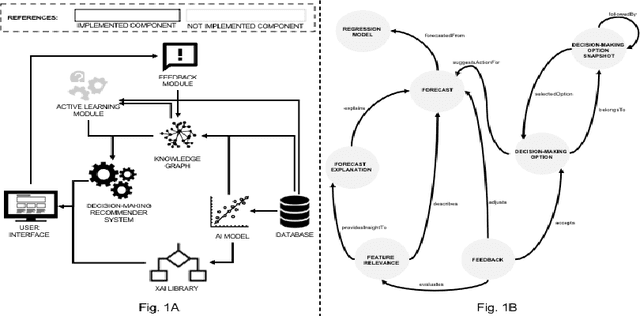

Abstract:A general approach for building a smart assistant that guides a user from a forecast generated by a machine learning model through a sequence of decision-making steps is presented. We develop a methodology to build such a system. The system is demonstrated on a demand forecasting use case in manufacturing. The methodology can be extended to several use cases in manufacturing. The system provides means for knowledge acquisition, gathering data from users. We envision active learning can be used to get data labels where labeled data is scarce.
 Add to Chrome
Add to Chrome Add to Firefox
Add to Firefox Add to Edge
Add to Edge